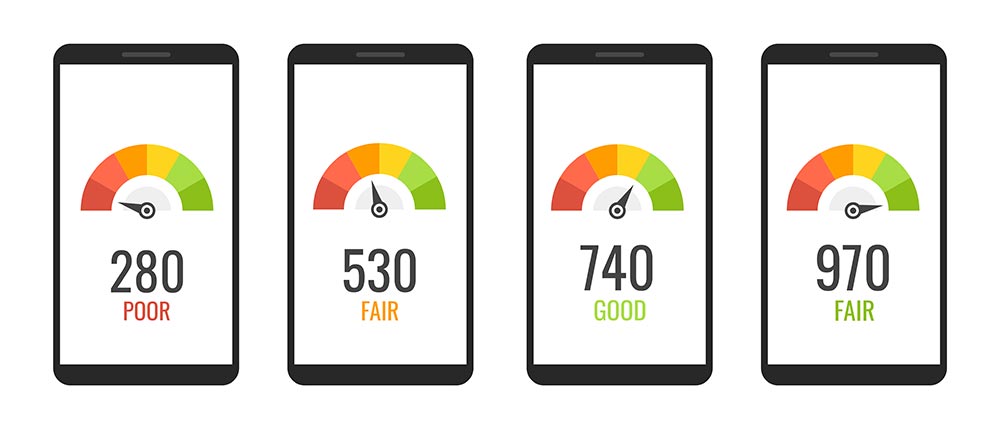5 Steps to Rebuild My Credit

What can I do to rebuild my credit? Many people with a very low credit score ask themselves this question and don’t know where to start to rebuild their score with a bad credit report.
Here are the 5 steps to follow to achieve this effectively and without wasting time.
Pay your bills by the deadlines
Before you can even think about recovering points on your credit score, you first need to stop losing them, in particular by paying your bills on time. Make sure to always pay your bills and credit card statements by the deadlines to avoid any late payments. Any delay makes your credit score fall immediately, and it will then take you several months to recover the lost points.
Avoid bouncing cheques
Besides the fees and possible legal consequences that they can cause, bounced cheques can doubly affect your credit rating. Indeed, not only does your bounced cheque appear on your credit report, but if it was also used to pay off a debt, this incident will also appear on the report and have an impact on your score.
Refrain from making new loan applications
Applications that let you take out a loan affect your credit rating, even if no follow-up is given to them. If you’re looking to rebuild your credit, it’s therefore necessary to avoid filling out loan applications, especially since multiple loan applications are considered by financial institutions as a lack of stability in your situation and as a sign of the difficulties that you encounter in obtaining a loan.
Limit your credit card use
Using your credit cards can affect your rating, but it can also help improve it. Indeed, on one hand, if you use your cards to the maximum of the authorized limit, this is interpreted by financial institutions as an inability to limit your reliance on credit; in other words, your management is bad.
On the other hand, if you regularly make your monthly payments, you show that you are a good payer. And if you also pay more than the minimum required and you limit your credit card use to half of the amount authorized, you earn points, because you are considered a good manager.
Take out a secured credit card
Besides keeping a low profile, which helps rebuild your credit rating over a long period, it’s possible to speed up your recovery of points by using a secured credit card. People who don’t or no longer have access to credit, in particular as a result of payment defaults, can indeed obtain a so-called “secured” personal loan, a line of credit, or a credit card by paying a guaranteed deposit in the same amount as the financial institution. This procedure lets you use a credit card and thereby regain points, as long as you use it wisely—that is, only use the card up to half of the limit and always pay your bills on time. After one year of incident-free use, you should even be able to apply for a traditional credit card and recover your deposit.
Rebuilding your credit requires patience and flawless management. However, if you follow these steps seriously, you will be able to improve your credit score faster and even—over time—obtain a mortgage.
5 Steps to Rebuild My Credit: A Comprehensive Guide
Rebuilding your credit can feel overwhelming, but it’s entirely possible with dedication and the right approach. Here are 5 steps to rebuild my credit that can set you on the path to financial recovery.
Step 1: Check My Credit Report
The first of the 5 steps to rebuild my credit is to obtain and review my credit report. Understanding where I stand is crucial. I can access my credit report for free from major credit bureaus once a year. This allows me to identify any errors or negative items that may be impacting my score.
Step 2: Dispute Inaccuracies
After reviewing my report, the next of the 5 steps to rebuild my credit is to dispute any inaccuracies. If I find errors, I should file disputes with the credit bureaus to have them corrected. Removing incorrect information can significantly improve my credit score.
Step 3: Make Payments on Time
One of the most important 5 steps to rebuild my credit is to ensure that all my payments are made on time. Timely payments account for a significant portion of my credit score. Setting up reminders or automatic payments can help me stay on track.
Step 4: Reduce Credit Utilization
Another key among the 5 steps to rebuild my credit is to lower my credit utilization ratio. Ideally, I should keep my credit card balances below 30% of my total available credit. Paying down existing balances can positively impact my credit score.
Step 5: Establish New Credit Wisely
Finally, one of the 5 steps to rebuild my credit involves applying for new credit judiciously. Securing a secured credit card or becoming an authorized user on a responsible person’s account can help me build positive credit history. However, I need to avoid opening too many accounts at once, as this can hurt my score.
Conclusion
By following these 5 steps to rebuild my credit, I can take control of my financial future. Regularly checking my credit report, disputing inaccuracies, making timely payments, reducing credit utilization, and establishing new credit responsibly will help me rebuild my credit score over time. Remember, it’s a journey that requires patience, but the results will be worth it.